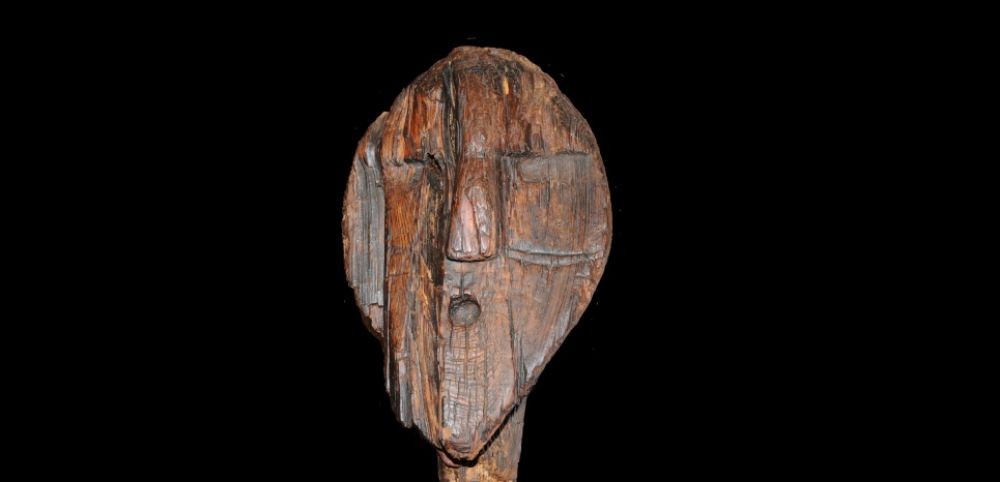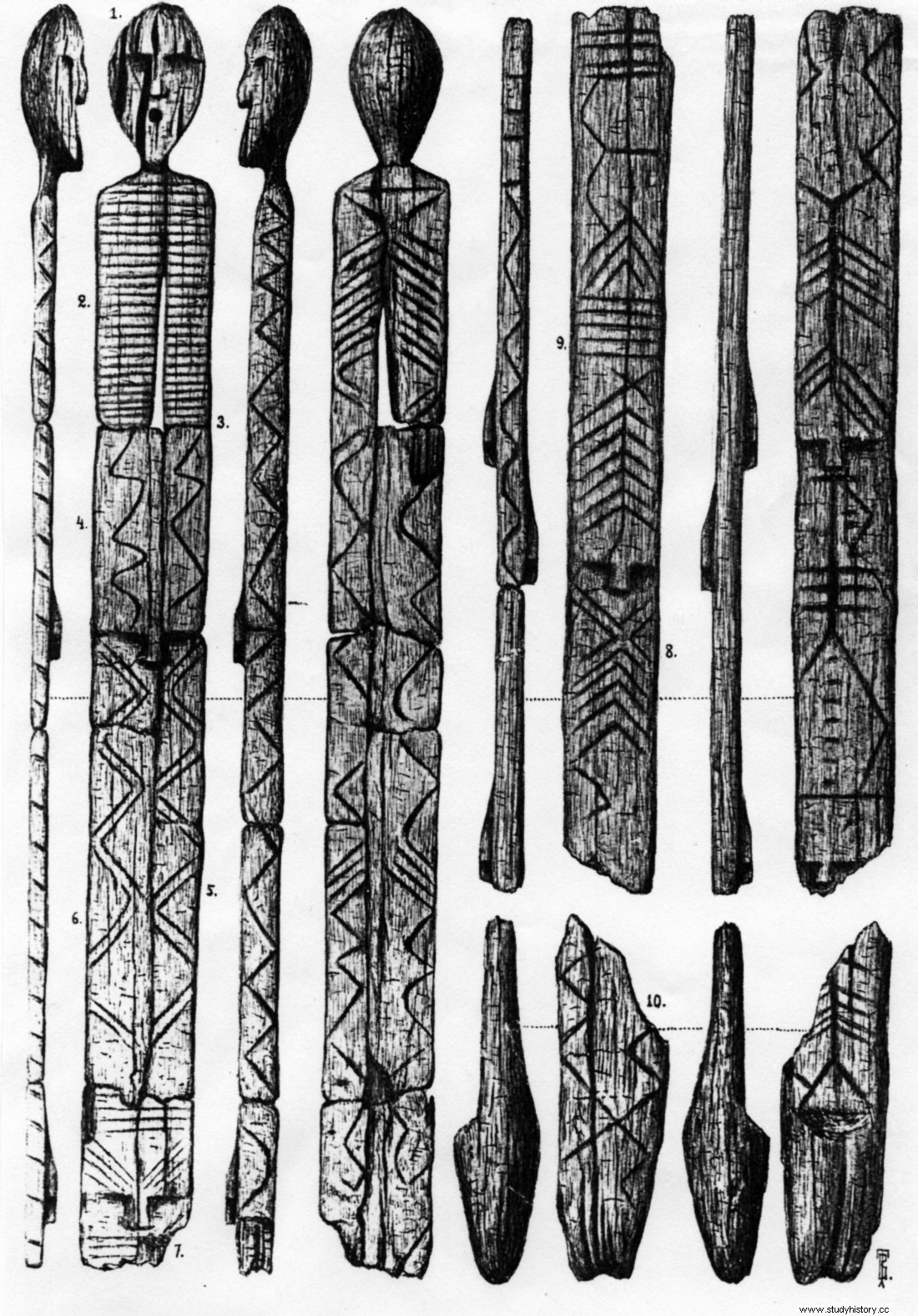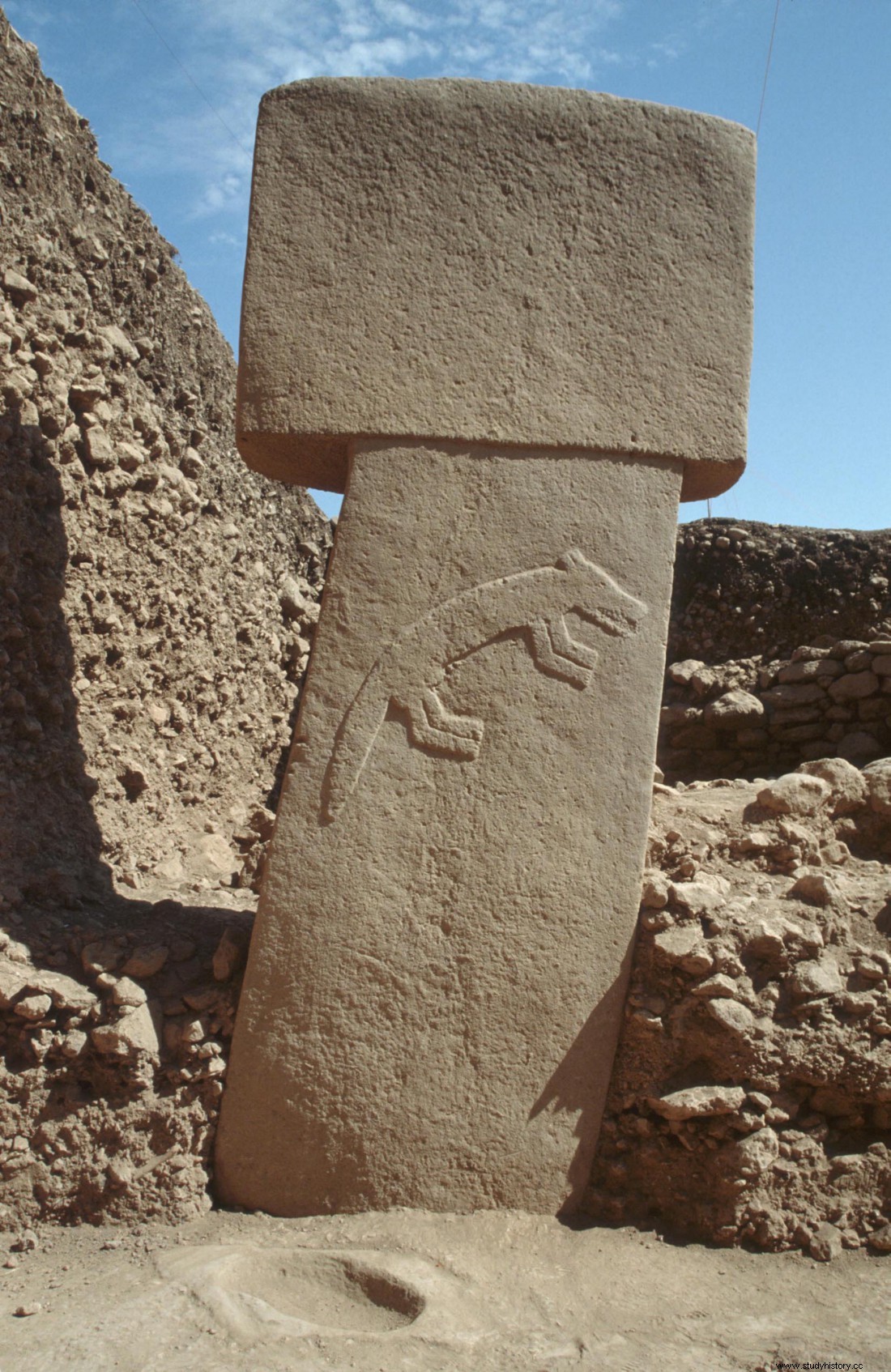An extraordinary statue discovered in the Urals in the 19 e century would be the oldest wooden sculpture in the world. New dates published in the journal Quaternary International have just pushed back the age of this prehistoric treasure by several centuries.

Shigir Idol Head
UPDATE. A new study published in the journal Quaternary International pushes back the true age of the Idol of Shigir, the oldest wooden statue in the world, by 900 years. It would actually be dated 12,500 years (against the 11,500 years obtained previously). In 2015 (below) Sciences et Avenir returned to the discovery of this exceptional prehistoric work, unearthed in the Urals, in Russia, in the 19th century. Twice as old as Stonehenge (England), this 2.80m high totem is kept at the Sverdlovsk Regional Museum in Yekaterinburg, Russia. Studied by the same team of researchers as that led by Dr. Thomas Terberger, professor of prehistory at the Department of Cultural Heritage in Lower Saxony (Germany), the new dates bring its creation even further back in time. "The idol was carved at a time of great climate change, when the first forests were spreading in Eurasia" , explained the prehistorian who responded to New York Times . It also testifies to the complex symbolic universe of the spiritual world of the hunter-gatherers of Eurasia. And above all the disappearance of all perishable objects made of organic matter, so many archaeological archives that have never come down to us.
With these eyes symbolized by two simple slits, its "O" shaped mouth and its slender body covered with incisions, no one would have imagined that this wooden statue of Siberian origin, 2.80 meters high, was as old as the earliest Neolithic works found in the Near East. And yet! Recent datings carried out from new samples taken from the heart of the statue have just attributed to it the canonical age of… 11,500 years, confirming its status as the oldest known wooden sculpture in the world.

Image caption:The full length Idol of Shigir, on display at the Sverdlovsk Museum, Yekaterinenburg. ©Thomas Terberger
7 tiny samples
125 years after its discovery in the region of Sverdlosk (Russia), "the Idol of Shigir" thus upsets what specialists thought they knew of the first human achievements in Eurasia. Unearthed in 1890, this "totem" lay, split into several pieces, 4 meters deep in a peat bog whose natural acidity had made it possible to preserve it by slowing down the decomposition of organic matter. It had since been on display at the Sverdlovsk Regional Museum in Yekaterinenburg, after suffering the vagaries of recent history. Part of the idol has indeed "disappeared" during the Soviet era, the original statue - 5.30 m high - having been reduced to 2.80 m. Luckily, precise statements had been made in 1914 by the Siberian archaeologist Vladimir Tolmachev who attests that four other stylized faces, in fact, adorned the statue, originally (see drawing below).
Seven tiny samples (0.3 g), taken from different parts of this work, were analyzed using the so-called accelerator mass spectrometry (AMS) method by the Klaus-Tschira AMS laboratory in Manheim (Germany). And Thomas Terberger, professor of prehistory at the Department of Cultural Heritage of Lower Saxony (Germany), who participated in these new radiocarbon dates with his colleague Mikhail Zhilin from the Institute of Archeology of the Russian Academy of Sciences, is still moved by the result:"This work exceeded all our expectations , he explains to Sciences et Avenir . There is no such ancient woodcarving in all of Europe, nor in the world . Evidence that at the beginning of the Holocene [geological epoch spanning the last 10,000 years, Ed] the hunter and fisher-gatherer populations of Eurasia were as advanced in their creation as those of the Middle East" .

Records of the Idol of Shigir made by Siberian archaeologist Vladimir Tolmachev in 1914. ©Vladimir Tolmachev
A TRUNK OF LARCH. Uwe Heussner, of the German Archaeological Institute in Berlin, for his part, carried out dendrochronological analyzes (study of the woods and their age) and was thus able to determine that the idol had been carved from an old larch trunk. 157 years old at the time of its manufacture.
What is the meaning of Shigir's Idol?
It is difficult today to understand the symbolic meaning of this statue. Were these portraits of ancestors? Spirits? The set is decorated with geometric motifs similar to others, engraved or painted, found on smaller contemporary objects, such as bones, antlers or amber. These graphic treatments could just as well evoke tattoos, body paintings or clothing decorations, like those identified on Balkan Neolithic figurines. At the Sverdlovsk Regional Museum, where the huge totem vampirizes the eyes of visitors, they now pride themselves on possessing a work as old as the engraved stelae of the Göbekli Tepe sanctuary, in southern Anatolia (Turkey), considered the first temple in the world!

Sanctuary of Göbekli Tepe, in southern Anatolia (Turkey) ©Deutsches Archäologisches Institut, Orient Abteilung, I.Wagner
